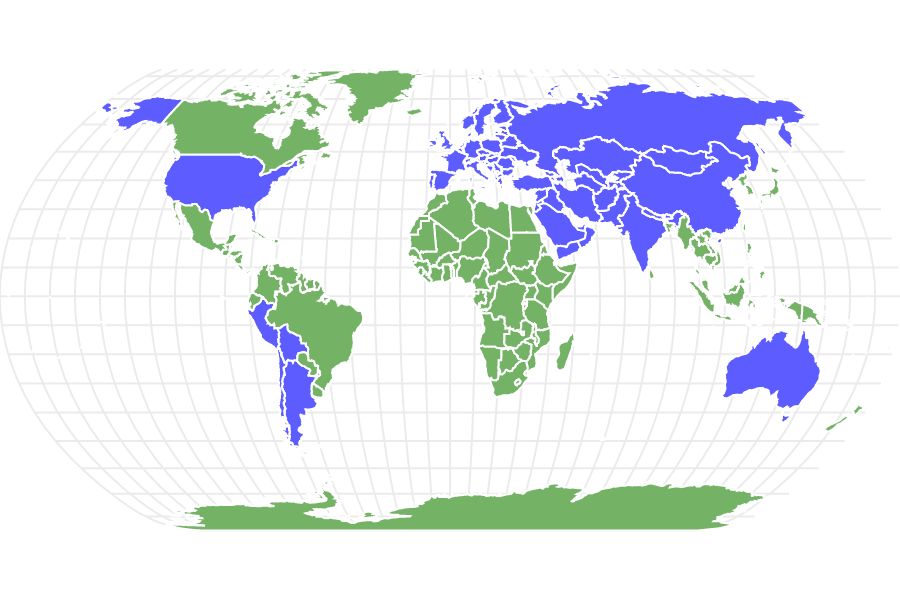The avocet's long, sinewy legs make it appear as if it's walking on stilts!
Advertisement
Avocet Scientific Classification
- Kingdom
- Animalia
- Phylum
- Chordata
- Class
- Aves
- Order
- Charadriiformes
- Family
- Recurvirostridae
- Genus
- Recurvirostra
- Scientific Name
- Recurvirostra
Read our Complete Guide to Classification of Animals.
Avocet Conservation Status
Avocet Facts
- Main Prey
- Insects. Fish, Crustaceans
- Fun Fact
- The avocet's long, sinewy legs make it appear as if it's walking on stilts!
- Distinctive Feature
- Long curved beak and striking plumage
- Wingspan
- 29-31.5 inches
- Incubation Period
- 3-4 weeks
- Habitat
- Temperate wetlands
- Predators
- Dogs, Cats, Stouts
- Diet
- Carnivore
- Lifestyle
- Flock
- Favorite Food
- Insects
- Type
- Bird
- Slogan
- Has a curved, upturned beak!
- Nesting Location
- Shores
- Age of Molting
- About a month
- Migratory
- 1
View all of the Avocet images!
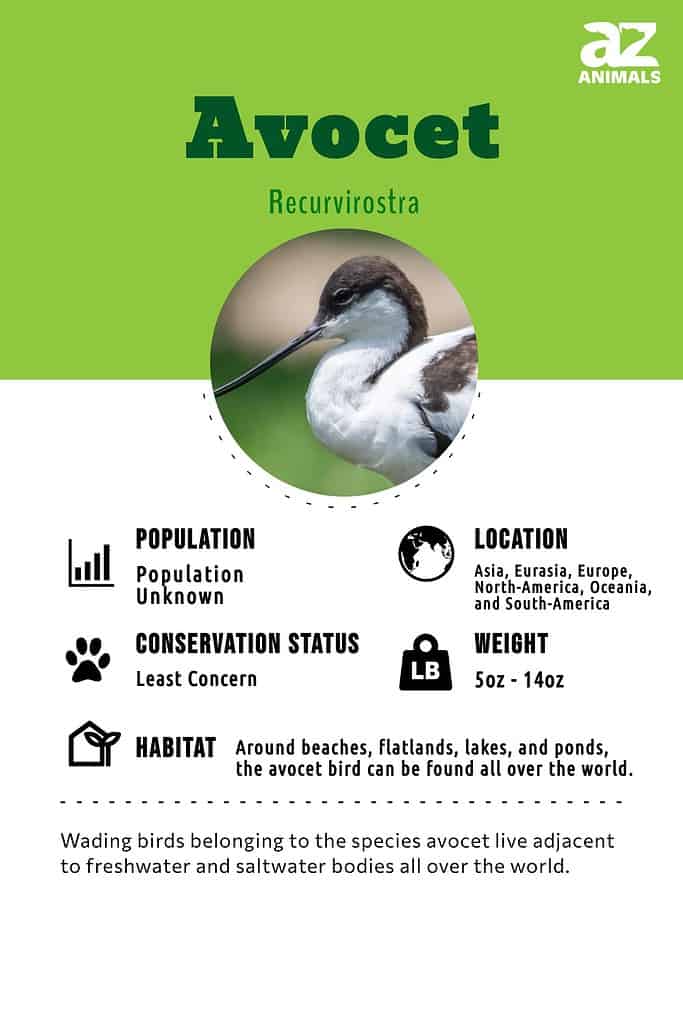
The avocet is a genus of wading birds that reside close to freshwater and saltwater bodies all over the world. Their long, sinewy legs make them appear as if they’re walking on stilts!
The name avocet is thought to come from a local Italian name avosetta. They are most closely related to other birds that live and feed near bodies of water.
An Amazing Bird: 3 Avocet Facts
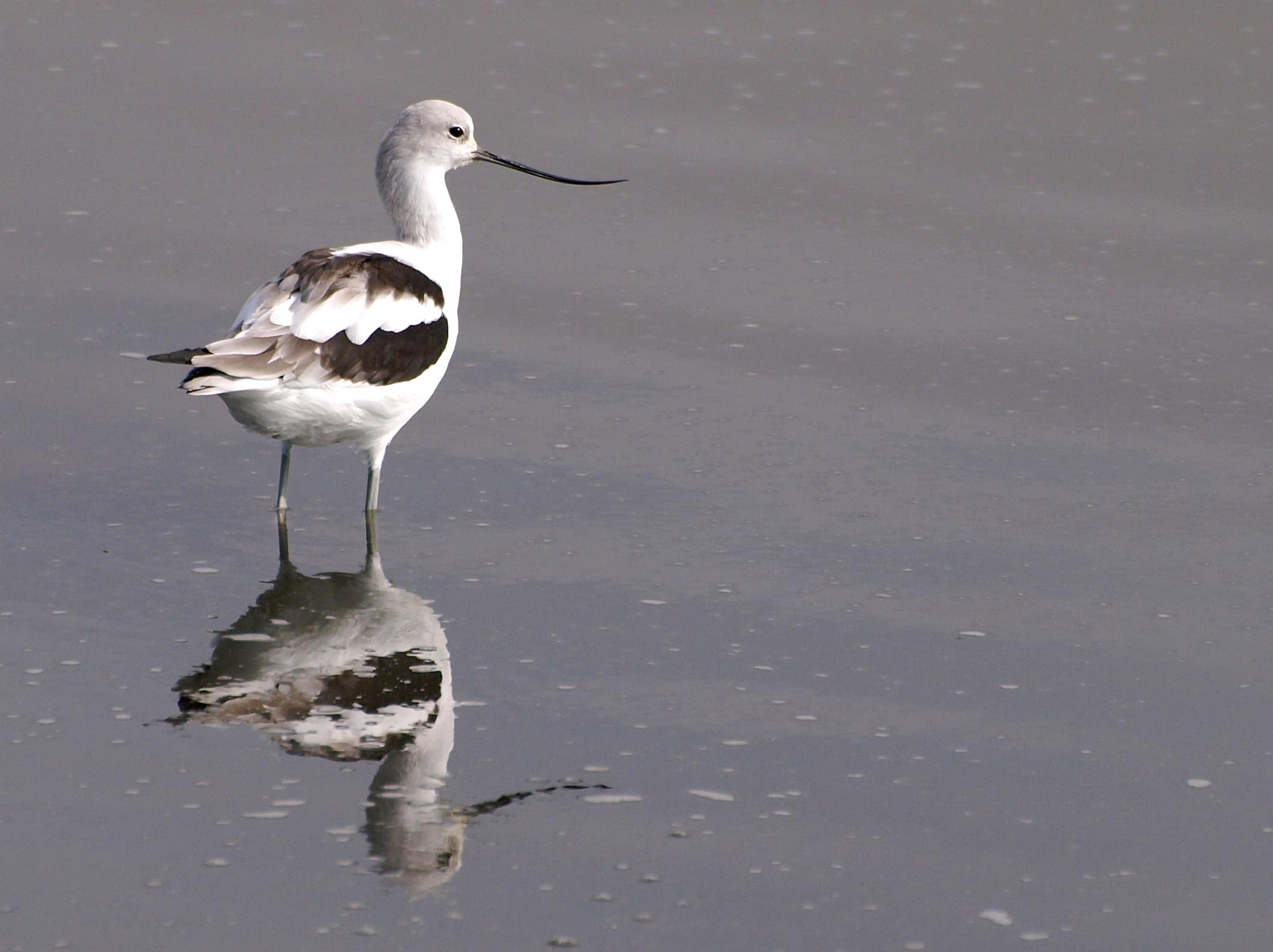
The avocet bird appears to prefer saltwater settings over freshwater ones if given the chance, but both types of habitats are appropriate for its needs.
©Ingrid Taylar from San Francisco Bay Area – California, USA, CC BY 2.0, via Wikimedia Commons – Original / License
- If given the choice, the avocet bird seems to prefer salty habitats over freshwater ones, but both types of habitats are suitable for its needs.
- A drawing of the pied avocet graces the emblem of the Royal Society for the Protection of Birds, a charitable organization in England and Wales. This species was actually extinct in Britain by the early 20th century, but the reclamation of marshland in the 1940s brought it back.
- The avocet bird is sometimes confused for the closely related to stilt. The main difference is that stilts have longer legs with red or orange colors, while avocets have more subdued colors like gray or black on their shorter but still very long legs.
Where to Find Avocet Birds
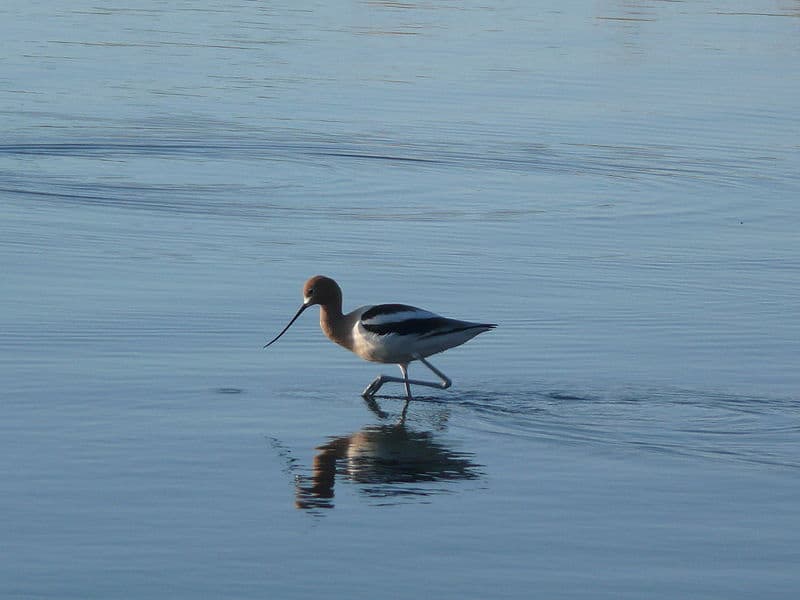
Around beaches, flatlands, lakes, and ponds, the avocet bird can be found all over the world.
©Shenille C, CC BY-SA 3.0, via Wikimedia Commons – Original / License
The avocet bird has a wide distribution near beaches, flats, lakes, and ponds around the world. The genus contains four species, each with its own geographical distribution. The American Avocet is endemic to Mexico, the Western United States, and parts of the Atlantic Coast.
The Andean avocet is endemic to much of Pacific South America. The pied avocet has an extensive range in coastal Europe, Africa, and Central and parts of South Asia. Finally, the red-necked avocet is native to Australia.
Avocet Bird Nests
The avocet prefers to nest in loosely organized colonies near the shore of large bodies of water. Built within small depressions, the nest is composed of little more than basic soil, pebbles, and other debris. If the water level rises, then the birds can build up the nest into a foot-tall mound.
Scientific Name
The scientific name of the avocet is Recurvirostra. Although this word appears difficult to pronounce at first glance, it’s actually a combination of two simpler Latin words: recurves, meaning curved backward, and rostrum, meaning bill. The Avocet is closely related to the long-legged stilts in the family of Recurvirostridae.
Evolution and Origins
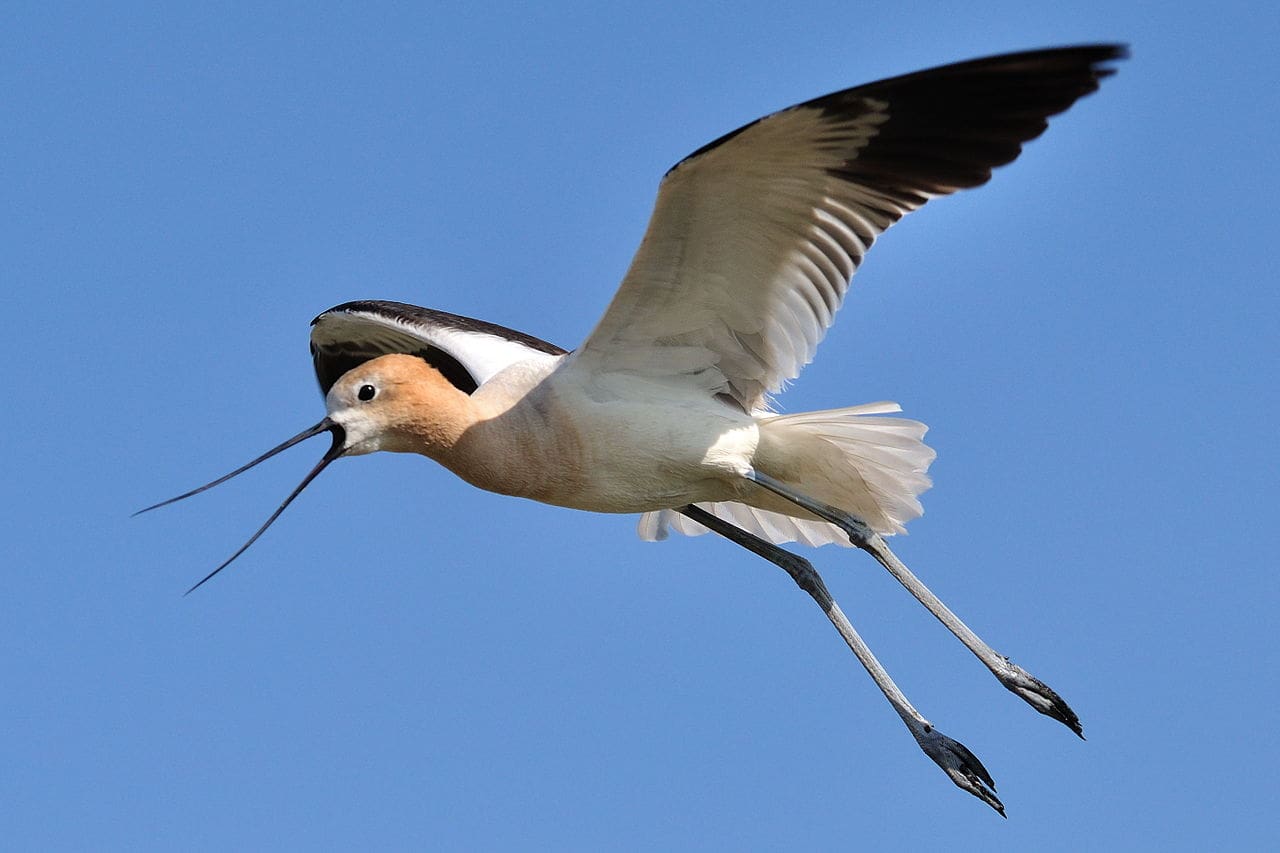
In his 1758 book Systema Naturae, the Swedish naturalist Carl Linnaeus gave the genus Recurvirostra its name.
©Don DeBold (donjd2) / CC BY 2.0, Flickr – Original / License
The Swedish naturalist Carl Linnaeus named the genus Recurvirostra in his book Systema Naturae, which was published in 1758.
The pied avocet, now known as Recurvirostra avosetta, was the sole species in this new genus. Recurvus and rostrum, two Latin terms that imply twisted or curved backward and bill or beak, are combined to form the name of the genus.
Avocets are extremely defensive in large groups and will drive away any other species of birds that attempt to set up nests close to them.
Additionally, The pied avocet nests in groups on the ground and can be found in estuaries where they feed on mudflats. The Royal Society for the Protection of Birds has adopted the pied avocet as its symbol.
Appearance
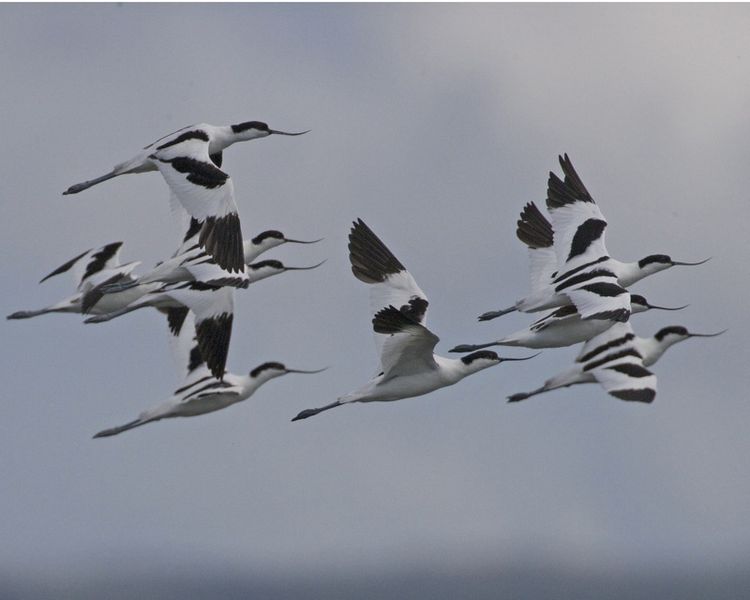
Pied Avocet measures 20 inches or more from head to tail.
Measuring up to 20 inches from head to tail (with a wingspan of around 30 inches from one tip to another), the avocet is a long, sinewy bird with a suite of distinctive features. The long, bluish, or grayish legs are adapted for wading into the water.
The webbed feet enable them to become proficient swimmers. And the long bill is a very well-adapted instrument for feeding. The feathers are a combination of black, white, red, and brown.
Curved Beak
Perhaps the most distinctive feature (apart from the long legs) is the long, slender bill with an upturned tip at the end. In order to feed, the avocet will wade into the shallow waters, lean forward, and place the slightly open tip of its bill on the bottom.
By sweeping the head from side to side, the avocet can stir up tiny prey hiding in the soil and then filter out food bits with the bill. Females and males are generally similar in appearance, but in some species, the bill is the giveaway.
The female has a shorter and more upturned bill compared with the longer and straighter bill of the male.
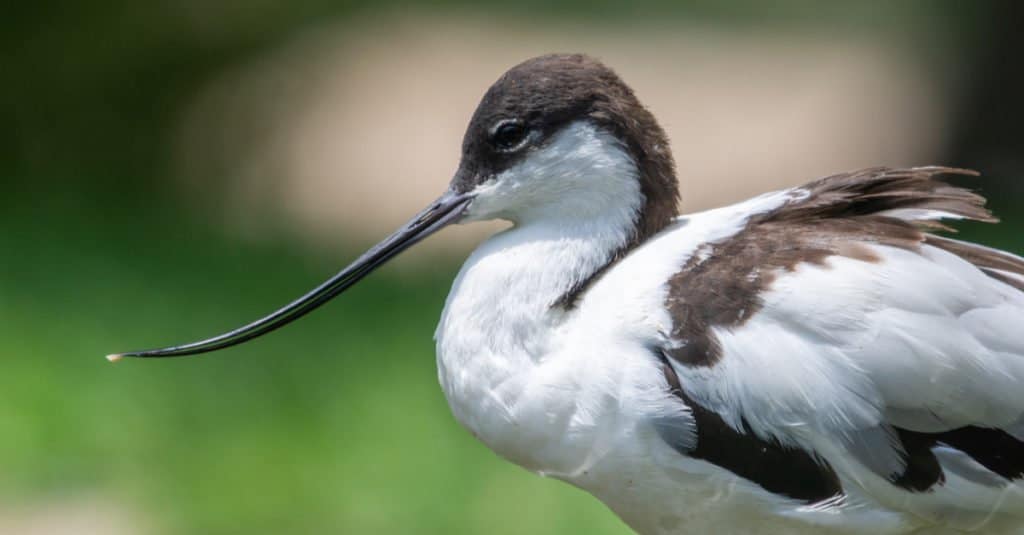
In contrast to the male’s longer and straighter bill, the female’s is shorter and more upturned.
©kingma photos/Shutterstock.com
Behavior
Outside of their normal breeding season, avocets occupy large, raucous colonies of hundreds. Although not exactly a cooperative animal, they will band together to aggressively defend the colony from predators and threats (though they will sometimes allow stilts to congregate with them).
These intelligent birds have all kinds of strategies to deal with predators. Sometimes they will make loud, irritating sounds to provide a distraction. Or they will pretend to be hurt to draw the predator away. They may also dive-bomb the predator to scare it off.
In order to communicate with each other, the avocets make loud and repetitive sounds, rising in intensity over time. Each of these calls conveys certain information to teach others about the identity of the individual or the presence of an invader. To attract a mate, the male avocets will combine their calls with complex displays of crouching, dancing, and bowing.
The avocet is a crepuscular bird, meaning that it’s most active during the dawn and dusk hours. With their webbed feet, avocets are excellent swimmers. In addition to its standard feeding behavior with its bill, avocets will sometimes “tip up” like ducks in deeper waters. This is when the lower half is submerged in water as it reaches down to feed. They are also very proficient flyers that travel very long distances.
Migration Pattern and Timing
The avocet demonstrates distinctive migrating patterns throughout the year. The American avocet, for instance, prefers to breed in a large stretch of territory between New Mexico and southern Canada. In the winter season, it travels south to Mexico or east toward Florida and the Atlantic Coast. The pied avocet, by contrast, breeds in Europe and Central Asia. Some populations travel as far south as Africa to winter, though other populations remain far closer to their breeding grounds.
Prey and Predators
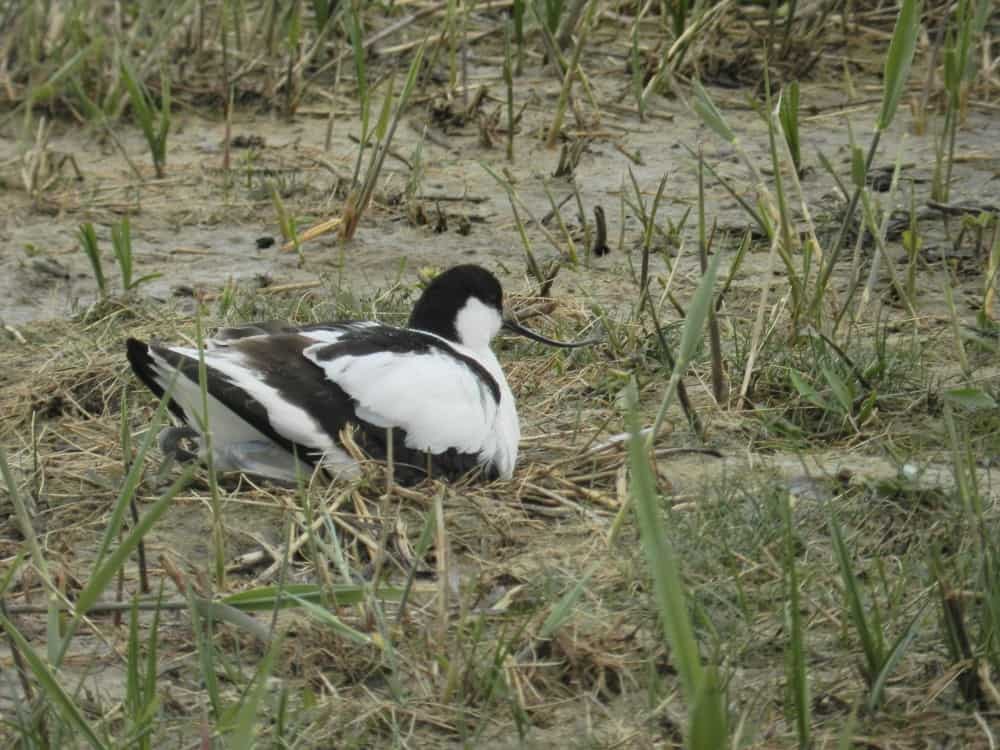
By controlling prey numbers, this bird contributes significantly to the ecosystem’s regulating functions.
©Millie Bond – Copyright A-Z Animals
This bird plays an important regulatory role in the ecosystem by keeping prey populations in check. During the foraging hours, entire groups will line the shore looking for food in a rather fascinating display.
What does the avocet eat?
They consume all types of small crustaceans, insects, and fish larvae. The diet is sometimes supplemented with seeds.
What eats the avocet?
Some of the more common predators include foxes, skunks, and weasels, but avocets prefer to nest where access for most other animals is difficult.
Reproduction, Young, and Molting
Based on studies of the American avocet, it’s known that this species, at least, likes to form a strong monogamous bond with its mate. It will demonstrate an interest in a mate by exhibiting a series of elaborate courtship rituals like crouching and bowing. This is the only species of the four to grow breeding plumage, almost pink or red in color when it’s time to mate.
The American avocet produces an average of four eggs per clutch. Both parents will take turns incubating the eggs for some three to four weeks. Born with downy feathers, the young chicks are ready to begin an independent life soon after emerging from the egg, because they already have the ability to hunt and swim on their own. They will develop feathers quickly enough to make their first flight at around four to five weeks of age.
This bird can live up to 15 years in the wild, but the American avocet has a life expectancy of about nine years on average. Since it takes about a year to reach sexual maturity, the avocet has relatively fewer breeding seasons to successfully raise offspring.
Population
The IUCN Red List has determined that all four species merit the classification of least concern, which means they are in no danger of extinction.
The bird was once widely hunted in the 19th and early 20th centuries, but according to population estimates from Partners in Flight, there may be up to 450,000 mature American avocets in the wild, thanks in part to the protection of the US Migratory Bird Act. Reports indicate it is becoming more common again in the Eastern United States as well.
The biggest threat to this bird today is the loss of habitat. It is estimated that some 60 acres of wetlands were lost every hour in the first 200-year history of the United States.
Scientists have finally begun to recognize and appreciate the importance that wetlands play in the ecosystem, and numerous reclamation projects are underway to restore environments to their original condition. Besides environmental degradation, another threat to the avocet is that their nests are sometimes destroyed by flooding, pollution, and trampling.
View all 194 animals that start with AAvocet FAQs (Frequently Asked Questions)
Are Avocets herbivores, carnivores, or omnivores?
Avocets are Carnivores, meaning they eat other animals.
How do Avocets have babies?
Avocets lay eggs.
How to say Avocet in ...
Thank you for reading! Have some feedback for us? Contact the AZ Animals editorial team.

